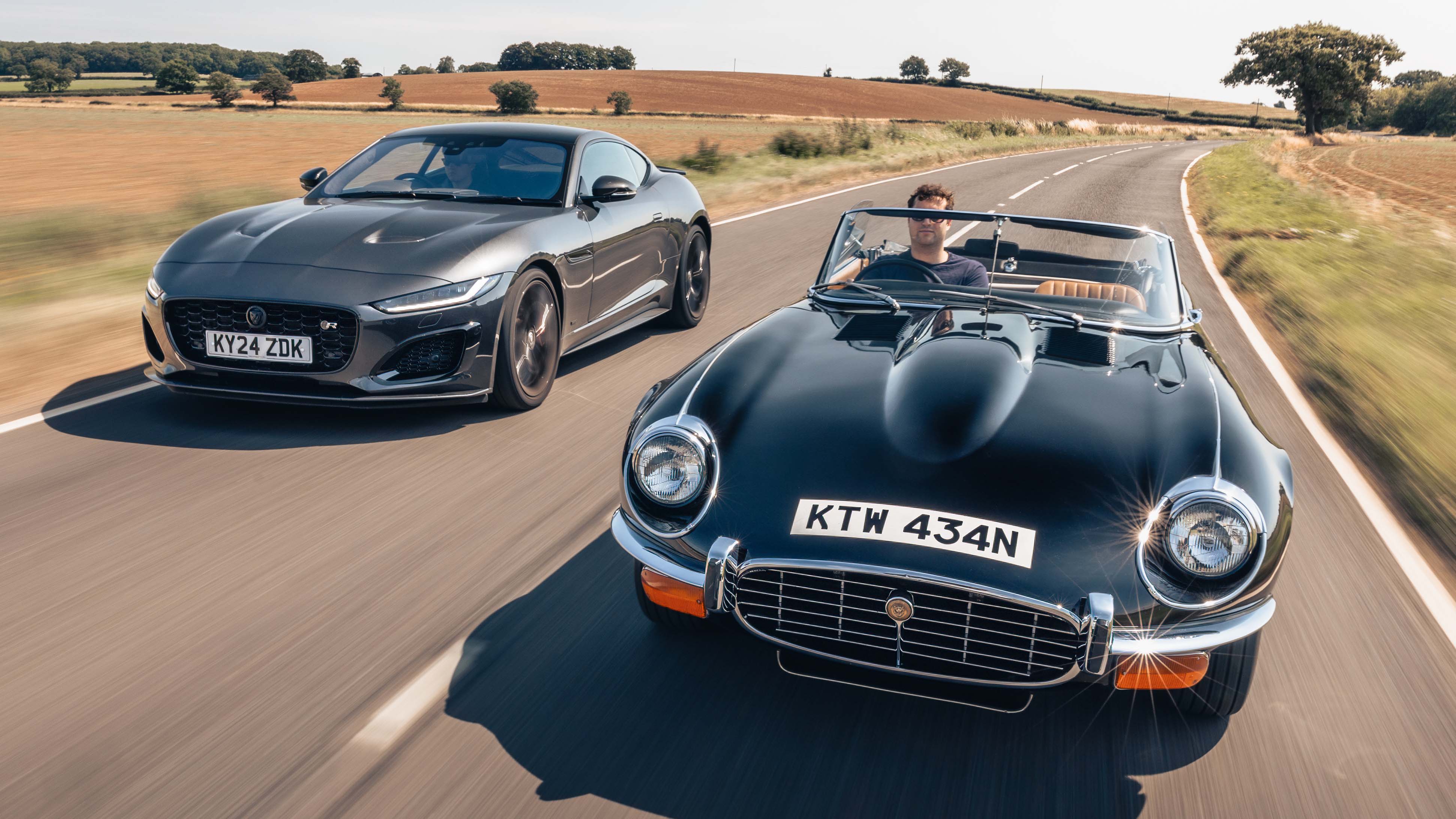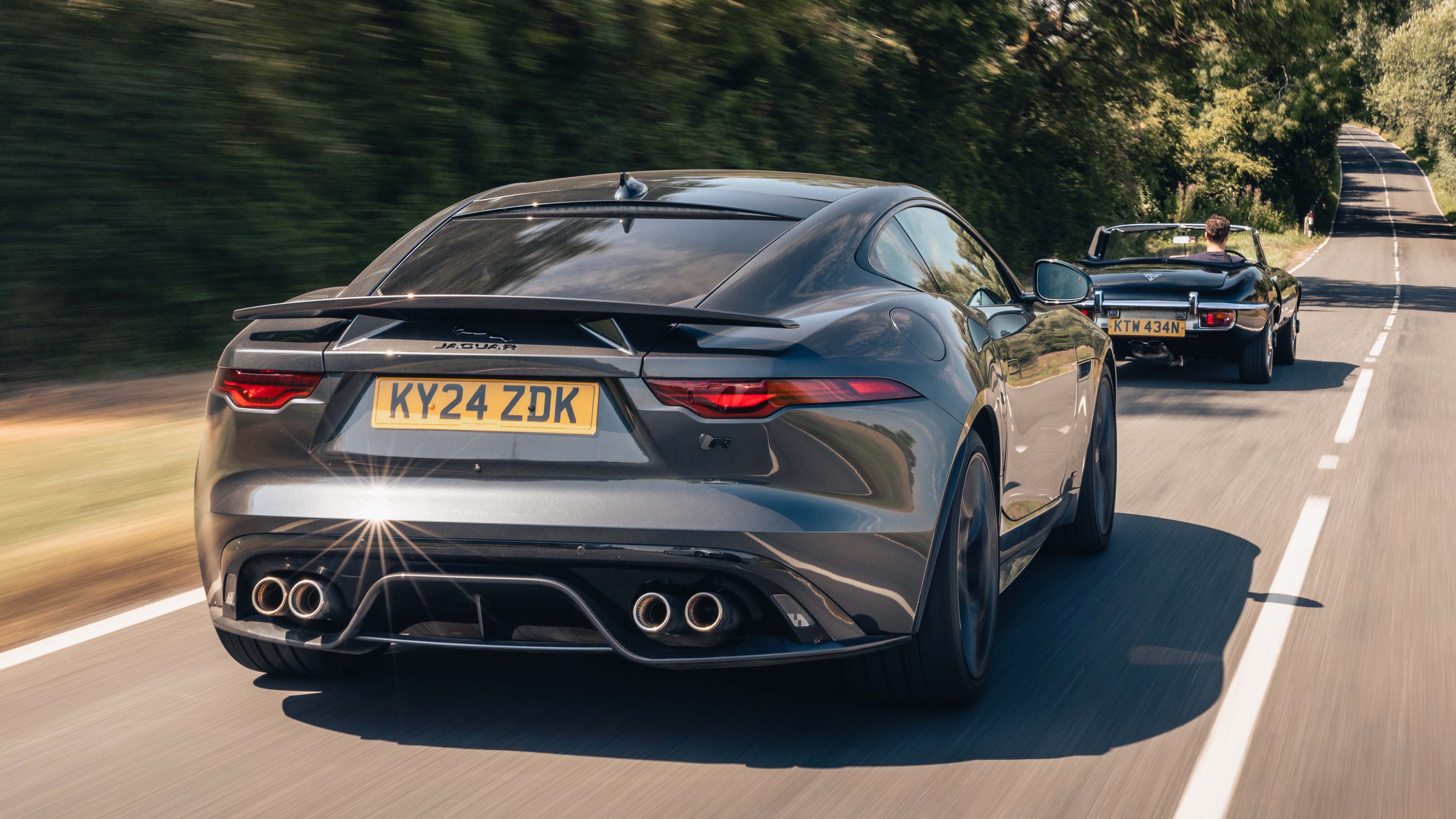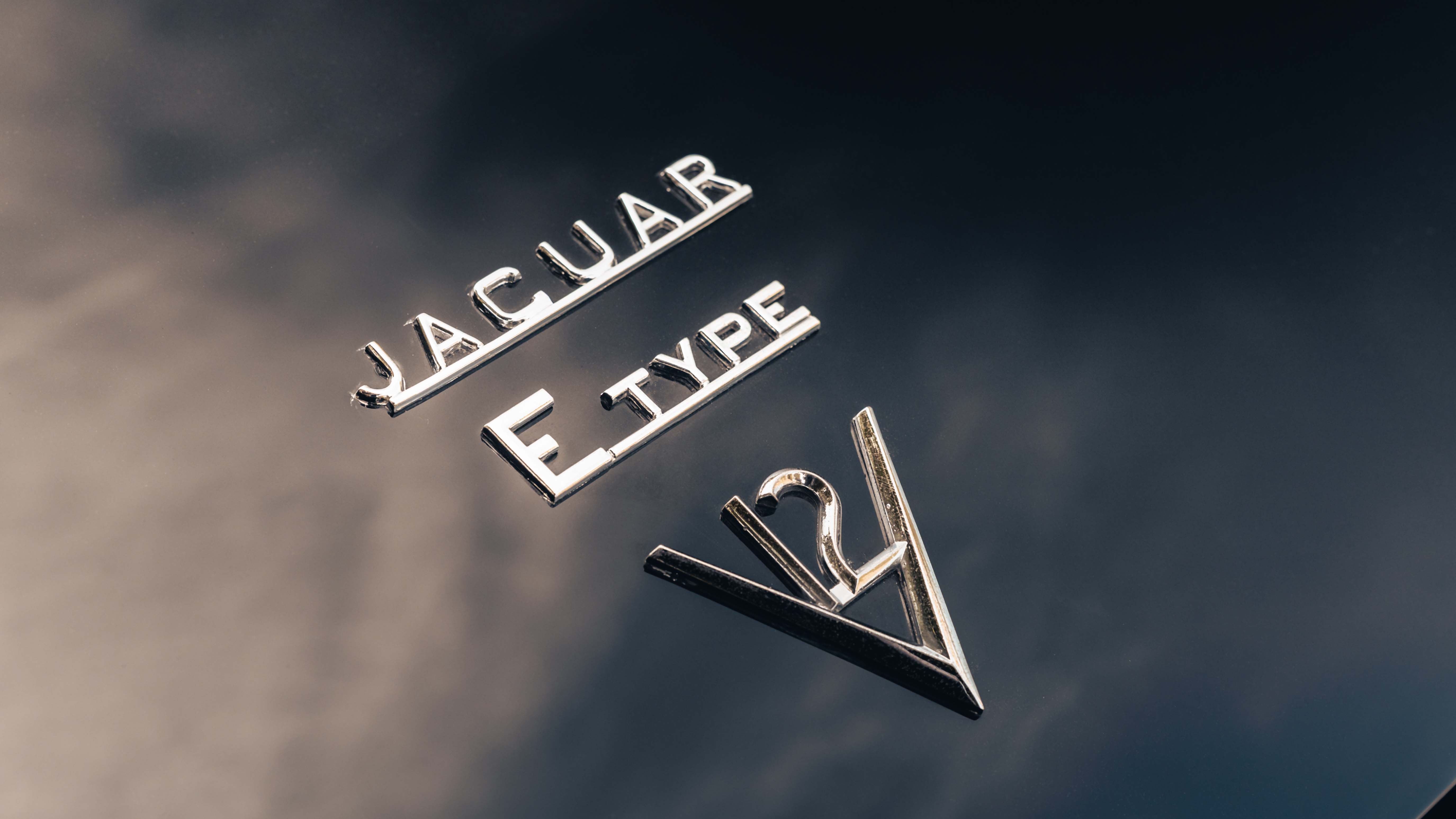
Jaguar F-Type R - long-term review
£104,880 / £109,360 as tested / PCM £1,132
SPEC HIGHLIGHTS
- SPEC
Jaguar F-Type R
- ENGINE
5000cc
- BHP
567.3bhp
- 0-62
3.7s
Time to say goodbye: waving away our F-Type with one of the last ever E-Types
I never thought I liked the Series 3 Jaguar E-Type. Without having driven one, I’d always subscribed to the (not-uncommon) view that the 5.3-litre V12 couldn’t replace the legendary XK straight-six engine, and that it was too bulky and bulbous in its looks and general footprint as Jaguar chased sales across the pond.
Back in 2019, I’ll admit that I didn’t think I was a fan of the facelifted Jaguar F-Type either. I went to the unveiling at London’s Design Museum to see the narrower LED lights and new bumpers in the flesh, but I couldn’t shake the feeling that I preferred the slightly more upright face of the stunning pre-facelift car.
So, before saying goodbye to the R long-termer (and to the F-Type for good), I thought it’d be a good idea to get the final iteration of F-Type together with one of the very last E-Types. Surely both of Jag’s iconic sports cars didn’t just go out with a whimper…
This particular Series 3 is owned and maintained as part of the Jaguar Land Rover Classic Works collection. It’s number 43 of the final 50 E-Types ever built. Those 50 cars were all known as Commemorative Editions, with all of them roadsters and all but one painted black. Of the 50 examples, 19 were fitted with automatic gearboxes, but this is one of 31 with the four-speed manual and is in a pleasingly original unrestored condition.
Sitting alongside each other, both the F-Type and E-Type look wonderfully menacing. Over the past six months I’ve argued that the F-Type looks better when specced in bright and bold exterior paint, but there’s no getting away from the fact that in this Carpathian Grey it’s mean as hell. That black paint is perfect for the E-Type too. It helps to hide some of the Series 3’s embellishments like the larger grille, the second air intake mounted underneath and the flared wheel arches that accommodate the wider track and larger tyres. Yes, the Series 1 is still the prettier shape, but I now have a newfound appreciation for the looks of the last E-Type.
And then there’s the way it drives. This 1974 car was brought into the collection in 2014 and still only has 27,000 miles on the clock. It’s awaiting a little bit of a fettle, but even so that all-aluminium V12 has bundles of torque at low revs and doesn’t have much weight to shift either. When new the Series 3 made 272bhp, and it’s still easily quick enough to best modern traffic.
The four-speed synchromesh gearbox with its tiny little lever is much easier to use than the Moss box on early Series 1s too, and all Series 3s were fitted with power steering as standard. In fact, the steering is so light you don’t know too much about what’s going on up at the front of that long bonnet, but it stays flat through corners and yet manages to not crash over bumps in the road. That’s perhaps where the Series 3 E-Type and our F-Type feel most similar – both can take corners at proper sports car speeds, but they both also have the compliance and comfort levels of proper grand tourers. Although, given my need to slouch down to be able to look through the windscreen of the E-Type, I’m not sure I’d want to be crossing a continent in one any time soon.
The brake pedal in the old-timer requires a proper press but rewards you with genuine feel, and jumping from it into the F-Type you realise quite how over-assisted and snatchy modern brakes can be. The steering feels strangely heavy post E-Type too (not what I was expecting), while the 5.0-litre supercharged V8 has a completely different character to the E-Type’s silky smooth V12. The noise, the anger – that’s what I’ll miss most about the F-Type when Jaguar wrenches the keys from my hands. Will I ever get the chance to run another petrol-powered eight-cylinder sports car on long-term test?
Even if it’s not perfect – and neither of these cars are – there’s just something about a big, front-engined two-seat Jag sports car that feels right. There’s also a real familial connection between the two, and I’m now one of those people urging Jaguar not to forget its past in this brave new ultra-luxe electric world.
Featured

Trending this week
- Car Review
BMW iX3






